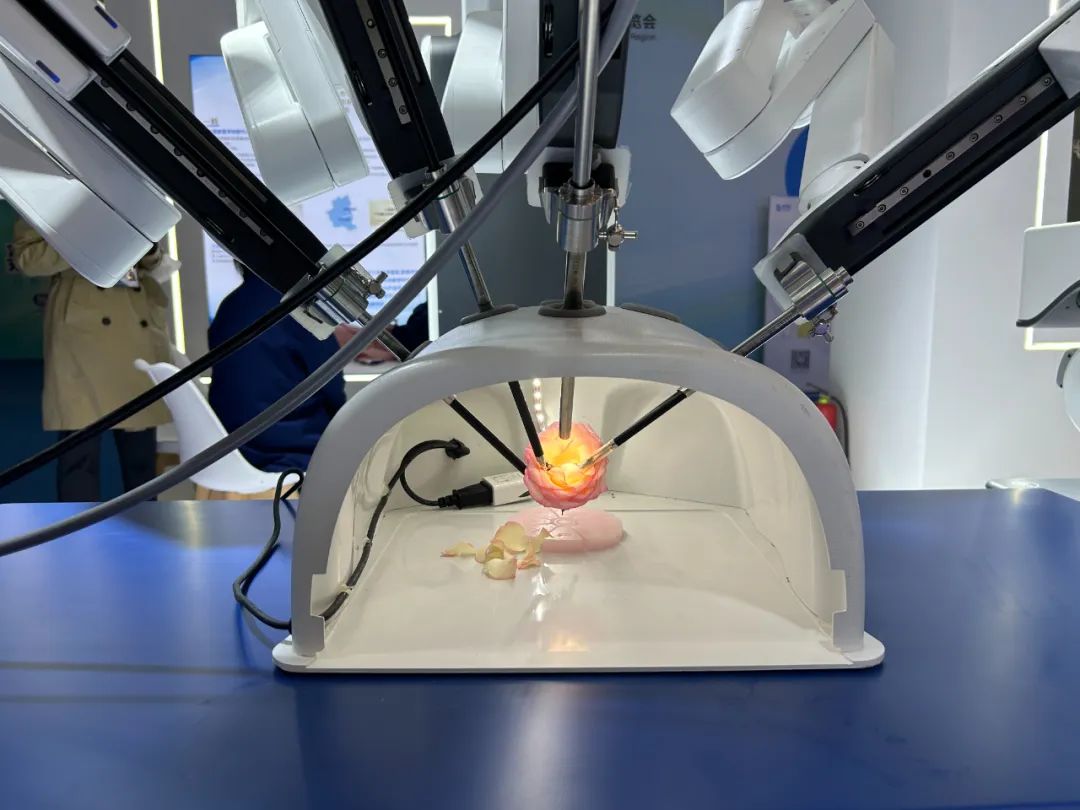
A surgical robot demonstrates its precise movements by delicately removing petals from flowers at the scientific technology fair. [Photo/WeChat ID: sh-jiading]
The sixth Scientific Technology Fair for the Yangtze River Delta (YRD) Region held from Nov 15 to 17 in Jiading district, Shanghai showcased a series of impressive scientific and technological achievements from the region.
Among the highlights of the fair was the airbag anti-fall vests showcased by a Suzhou-based company called Suzhou Yidaibao Intelligent Technology Co. The product is an innovative wearable device designed to protect individuals, especially elderly people, from fall injuries.
The device utilizes sensors and high-frequency data computation to accurately detect the wearer's movement and instantly deploys airbags in the event of a fall. The use of gas generators on both sides also allows the device to be used repeatedly.
The vest can also be linked to a mobile app that allows for remote monitoring of the user's movements. Furthermore, it can be configured to alert family members when a fall occurs.
Meanwhile, Jiading-based company Vaddsoft wowed visitors at the fair with Lisa, a hyper-realistic digital human that was created using 3D modeling and machine learning technology.
Gao Shiwen, the COO of the company, said that the new trend of using hyper-realistic digital humans is gaining momentum in the metaverse.
Another exhibit that drew much attention during the fair was a surgical robot named Toumai Laparoscopic Surgery Robot at the Shanghai MedValley booth.
Independently developed by Shanghai-based company MedBot, the robot has highly flexible wrist instruments and offers surgeons a three-dimensional view during procedures, thus simplifying surgery and reducing operation time. At the booth, the robot could be seen removing petals from flowers.
PilotD Automotive, which has been participating in the fair for four consecutive years, presented its precision simulation platform for autonomous driving. This year, they showcased improved physical sensor models that achieve a restoration rate close to 95 percent. By simulating driving scenarios, the platform allows developers to comprehensively experience environmental interactions. It also provides convenient testing solutions for autonomous vehicle development.

